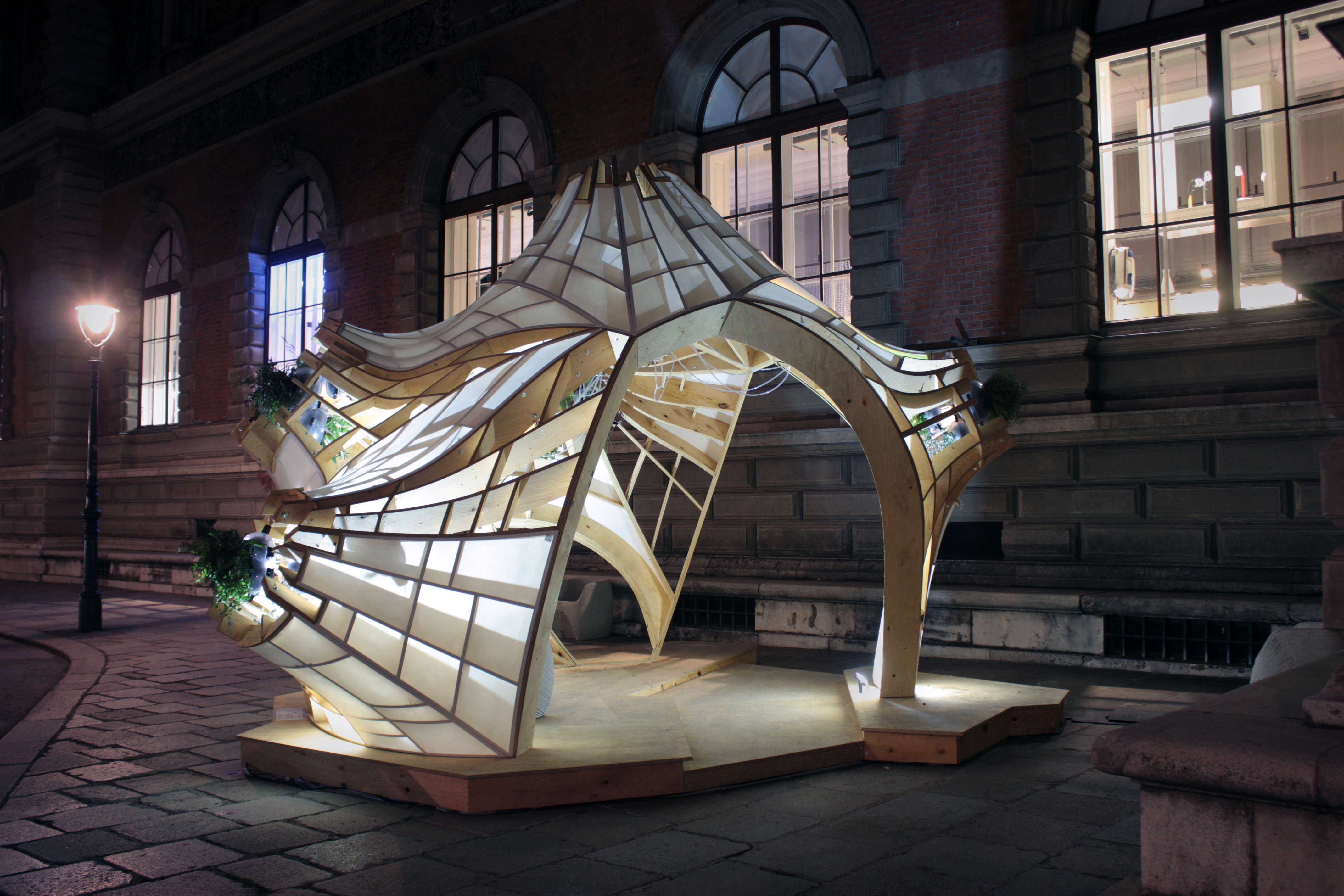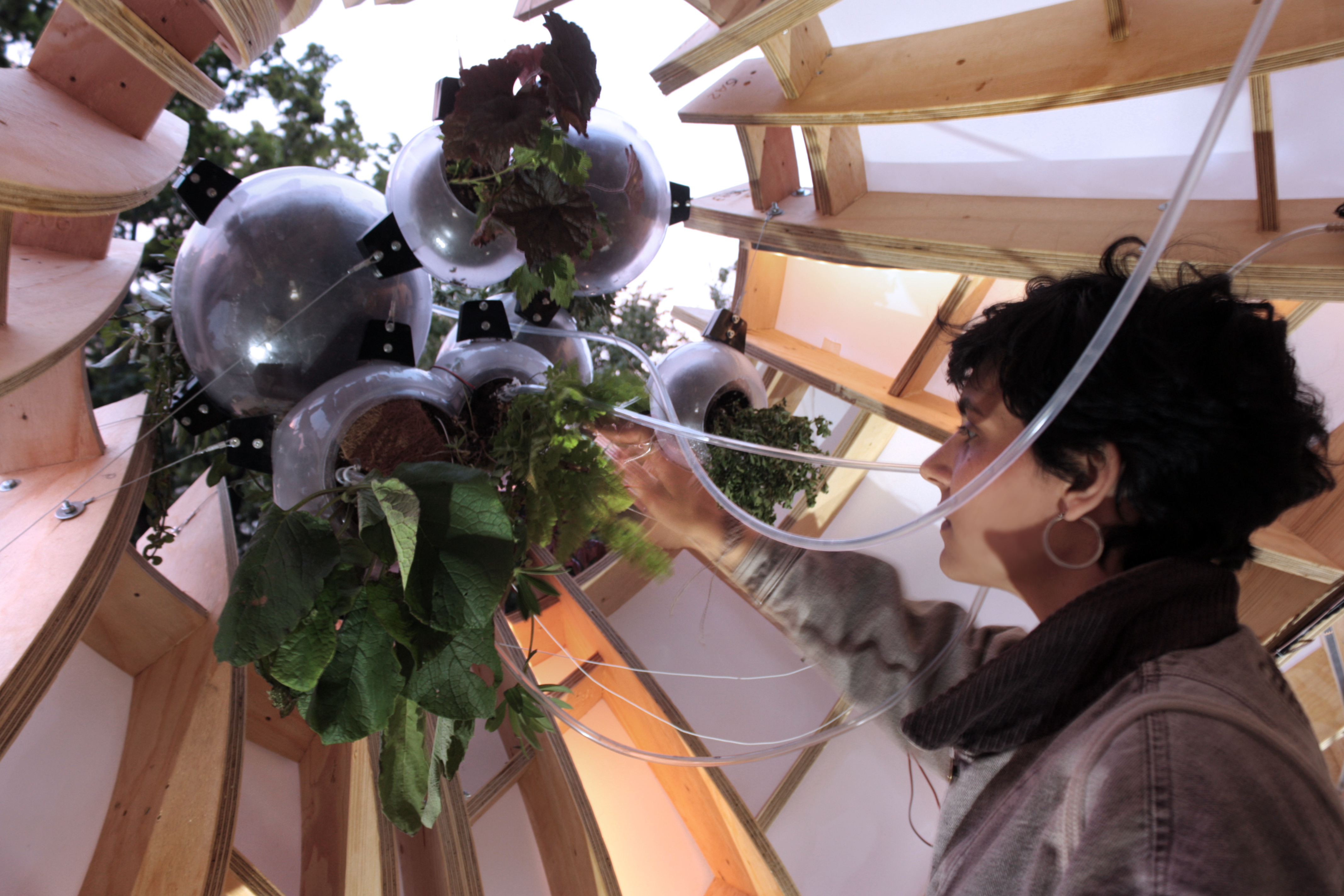KEPOS_cpdg,
MAK, Vienna
Concept Design: Angelica Lorenzi, Dennis Schiaroli Realization: Angelica Lorenzi, Galo Moncayo, Dennis Schiaroli, Anna Gulinska
People Involved
APS Vienna Directors: Andrea Börner, Bernhard Sommer
APS Vienna Research Team: Anna Gulinska, Galo Moncayo
KEPOS Contributions:
Project Design Supervision: Galo Moncayo
Parametric Engineering: Leonie Eitzenberger, Martin Eppenschwandtner, Adam Orlinski
(BOLLINGER+ GROHMANN Ingenieure)
Physical Computing: Galo Moncayo, Dominik Strzelec
Botanical Consultant: Verena Holzgethan
Furniture Design & Fabrication: Alexander Karaivanov (Baumit)
Thanks to: Afshin Koupaei, Anna Gulinska, Colby Suter, Mathias Juul Frost, Minho Hong, Zuzana Ernst
Local KEPOS Support:
BOLLINGER+ GROHMANN Ingenieure
Exikon arc&dev
Robotic Wood Craft
SeMF
Baumit
Kepos_cpdg is a prototype realized at the Institute of Architecture of the University of Applied Arts Vienna, under the direction of the Departments of Energy Design and Urban Strategies, within the framework of the project Active Public Spaces (APS). In particular against the backdrop of technological innovations on the one hand, and of the necessity to convert our economic system to sustainable and renewable energy supplies and production on the other, within the context of the project a range of different studies are conducted, initiatives started, and prototypical schemes developed.
Combining knowledge on smart planning and smart technologies with citizen participation, the KEPOS installation highlights architecture’s integrating and innovative role in implementing sustainable urban developments. Actively engaging citizens, the installation is showcasing the potentials of information and communication technology (ICT) in public spaces for user interaction and participation, thus raising interest in architecture and public space among a broader audience.

KEPOS_collective post-digital garden is to be understood as urban common; a prototypical architectural urban strategy, manifesting the concept of a communal garden in the post digital society. Following the three key-elements of a common; pooled non-commodified resources, communities which share these resources; the rules negotiated and applied, reconsiders architecture as a spatial discipline in regard to its ability to delineate space through the process of its production, its experience, communication and gathering, rather than the mere enveloping of an empty space itself. The project fosters interlinking the physical–built as much as natural–environment with the digital world of information exchange. Thus, creating a sense of community that on the one hand exceeds the boundaries of a given locality, while at the same time integrates multi-layered dimensions of a new evolving public around it that is precisely defined through actions of care.




Assembly / Fab Lab
This three-dimensional garden sculpture may be composed of any modular wooden frame structure, skinned with heat-forming membrane. Accordingly, structural units can be produced in different degrees of complexity, either with manual tools or with the aid of CNC manufacturing, to then be wrapped and assembled by a small team directly on site.
A wooden base houses the water tanks, and at the same time stabilizes the construction.




Interaction
With the use of smart technology, KEPOS allows users to get involved through social media and in public space. Plants, soil, and air are equipped with sensor devices, connected to microprocessors that compute the input data to control the output systems. Three interlocking communication circuits orchestrate the performance; watering, text messaging, and lighting performance. The watering circuit senses humidity of soil and air to instantaneously transmit the information of watering request via social media to the community subscribed. However, response requires physical presence and tactile sense by means of a capacitive touch sensing installation that activates a water pump. Dripping water saturates the soil until the humidity sensor communicates the right amount of moisture to a lighting circuit, re-adjusting the colours in animated LED stripes to visualize the state of soil and plants.
Architecture - Nature - Technology







